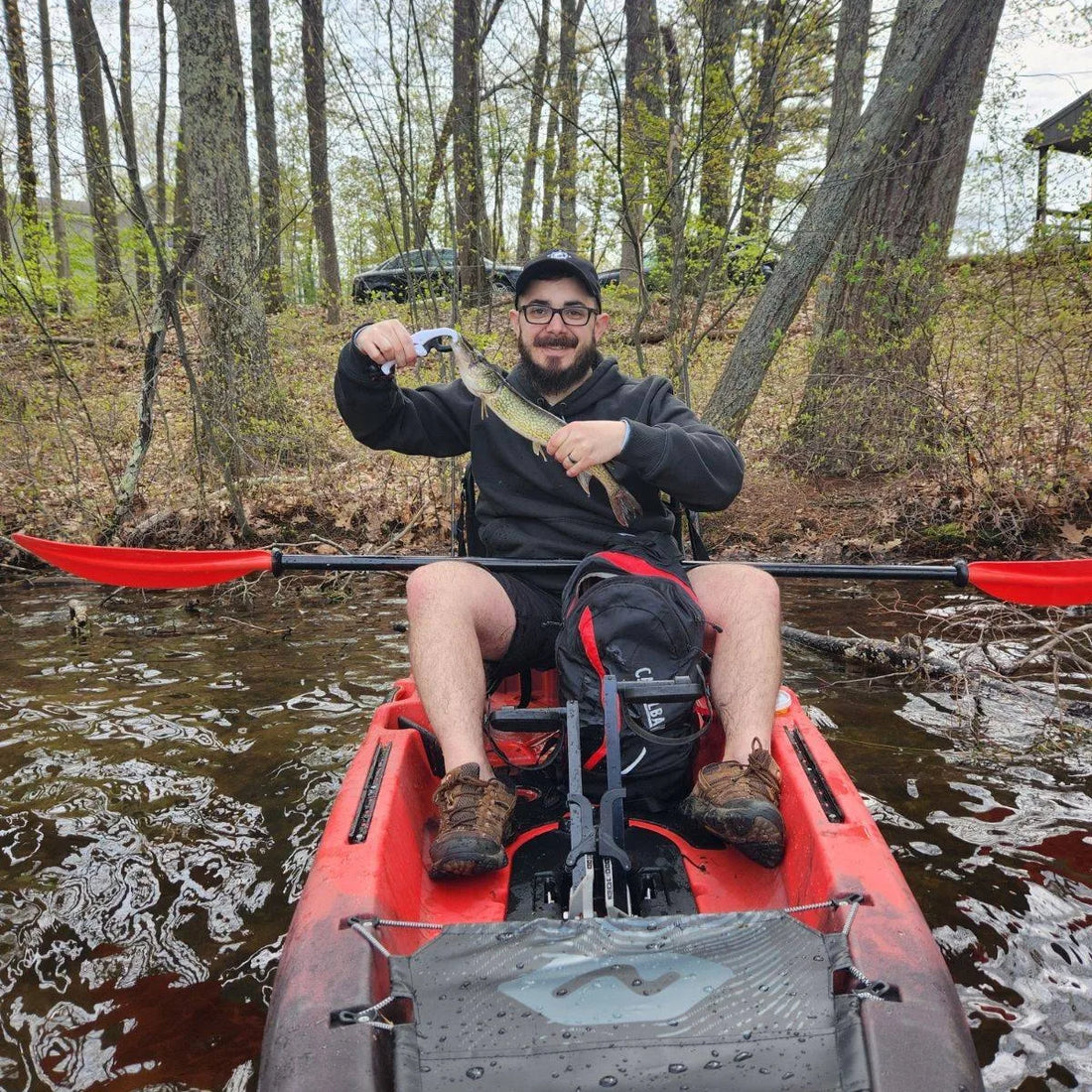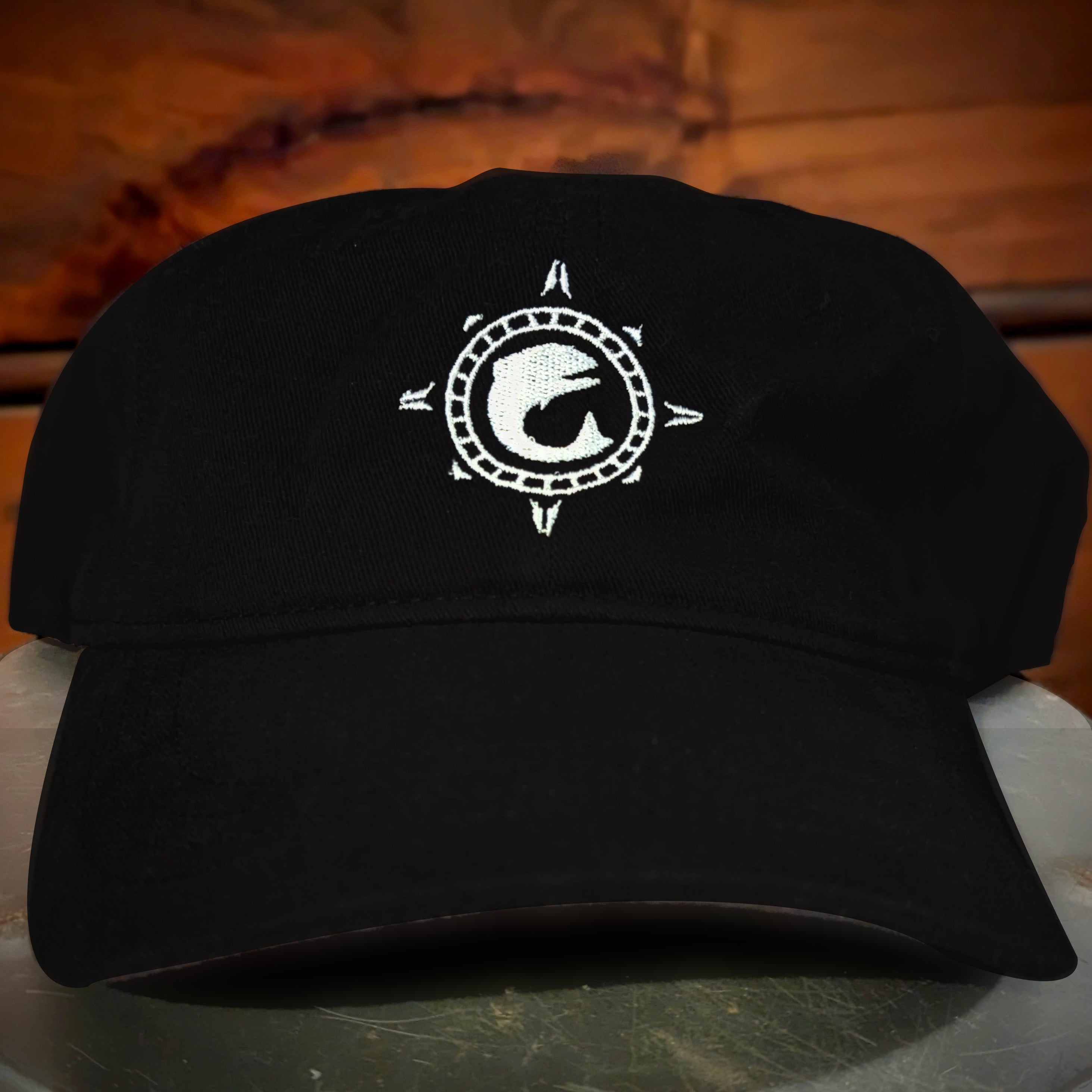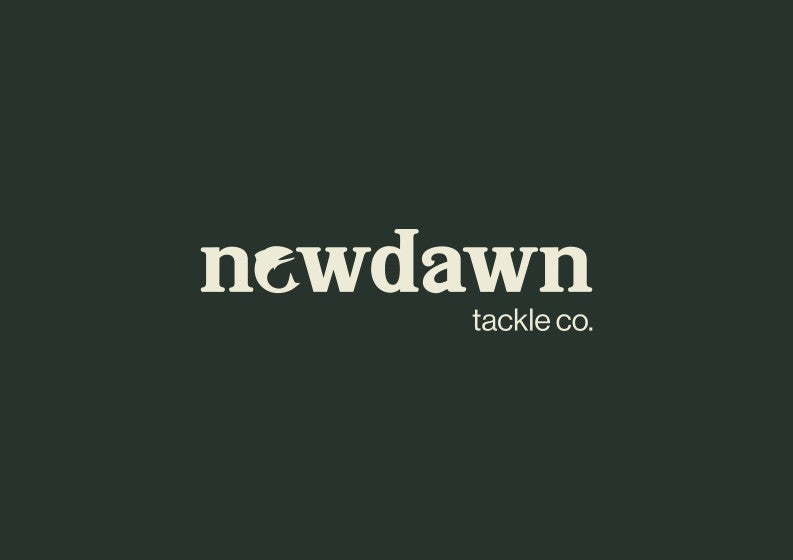
The Cottage Chronicles: Episode 3 - Microfishing and Monster Hunting
Neil ColicchioShare
Hey all! It's been a busy couple of weeks. I'm excited to bring you another new episode of "The Cottage Chronicles," and soon, I'll share some new gear that arrived earlier in the week.
Want to know what else is going on with me or with your favorite tackle shop? You'll have to tune into this month's episode to find out.
If you have a minute, leave me a review on Spotify or comment when you see this posted on my socials. I'd love to hear what you're enjoying and what I could do better.
*All music and sound effects courtesy of Pixabay
Transcript:
[Opening Theme Music].
Hello, you're listening to "The Cottage Chronicles," a show about fishing, family, and finding your way. I'm your host, Neil Colicchio, founder of New Dawn Tackle Co.
If this is your first time listening, thanks for joining me. If you've listened before, welcome back.
We've made it to episode 3, folks! Thanks again for sticking with me thus far. If you're new to the show, I hope you'll enjoy what I have in store for you on this episode. If you do, follow me to stay updated when new episodes are released. New episodes are usually released around the second Friday of the month.
Today's episode is going to be longer than the previous two. I'm aiming for something 30 to 60 minutes long for commuters or those who like to listen in the car. We'll see how that goes with this episode.
As usual, I've lined up a mix of stories and fishing topics. I'm also testing out a new segment I'm really excited about: listener questions.
So grab your tackle bag, throw on your favorite fishing hat, and let's start the show.
[Transition Music]
Every angler seems to have a story about the best catch they almost landed. Often, it's not a single story or an individual fish but a collection of "almosts" from a life spent on the water.
My latest "almost" would have been the best largemouth bass I'd caught in years. In fact, it was the biggest bass I'd hooked since my family sold the cottage. My wife and I finally found the time and energy to load the kayaks onto my truck and hit my favorite panfish spot for the first time this season. I knew there were species beyond bluegill and yellow perch in the lake; I had yet to find them.
After landing a few nice bluegills that were colored up for the spawn and dropping a nice crappie, a species I didn't even realize was in this particular lake, I felt a solid tug on the line. At that point, I was fishing a chrome and blue spoon, the same lure that landed me a PB yellow perch last month.
The fish wasn't ripping drag by any means, but it was big enough to put a good bend in my rod. I was convinced I had another nice perch on the other end of the line until I saw it breach the surface. I kept enough tension in the line to get the fish to the side of my kayak and see that it was a fat largemouth, probably in the 1 - 1.5 lb range. As I went to flip it over the side of the kayak to get a picture and a safe release, my beautiful bass turned into almost the best fish I caught that day.
My 6 lb fluorocarbon line snapped, ending that fight and my lucky spoon—the same spoon that got the skunk off the boat when my other favorite lure, a silver Vibrax spinner, was swimming just a little too high in the water column.
There's a part of me that wanted to use some colorful phrases at that moment—phrases a little too explicit for this podcast—and a part of me still does. I've got a pretty long fuse, but some things make me explode.
The line snapping came on the heels of a 1 p.m. start at the boat launch, a malfunctioning steering system on my brand-new pedal kayak, and the failed attempt to land the crappie I mentioned a moment ago. I was more than just a little miffed.
At this point, I had two options—absolutely lose it or switch back to ol' reliable, my beloved silver Vibrax. So, I gathered up all the patience I had and tied the Palomar knot to end all Palomar, then sent that Vibrax into orbit on my next cast. It wasn't long before I hooked up again. First, a smaller largemouth, then a few bluegills before I decided to move on to the next cove.
I told my wife to paddle on while I took one more cast, and seconds later, I had what I thought was a bass rivaling the first one. When I got it to the side of the kayak, I could see by the toothy grin that what I'd hooked wasn't a bass but the longest slime dart I ever remember catching. As my wife turned the kayak around to grab a picture, I pulled a chain pickerel out of the water that was double the size of any other that I've caught in recent years.
My all-time favorite "almost" fish tale involves another much larger pickerel. Years ago, I was fishing the dam just down the street from my house. At the top of the dam is a rock wall that overlooks a long, shallow pond. Along the bank, slightly upstream from the dam itself, there's a marginal zone where bluegill and yellow perch build their nests as the water warms.
I was floating worms in that area and fishing for dinks when I hooked into a small bluegill. As I reeled it in, a giant mouth came out of the shadows. The biggest pickerel I've ever seen propelled itself, mouth ajar, at the bluegill. A short chase ensued, but a failed hookset sent the toothy torpedo back to the pond, never to be seen again. If you ever wonder why I have a product category for pickerel or post about them as much as I do about trout or bass, you'd be right to think this fish is the reason.
Speaking of fish that I obsess over, the last of my almost great catches that comes to mind is the Bear Lake Monster that I almost caught in Utah. In September 2019, my wife and I got married and embarked on a road trip through UT, WY, ID, and MT. Of course, I couldn't resist the chance to do some fishing while we were there, so I booked a fly fishing lesson in Jackson Hole for the second week of our trip.
We spent the first week in Bear Lake, right on the border between UT and ID, and I was determined to catch a lake monster. If I didn't land a fish, I'd settle for the actual Bear Lake Monster, a lake creature very similar to the Loch Ness Monster or Champ, Lake Champlain's lesser-known creature of legend.
I spent what felt like an eternity fishing tubes and chunks of cut bait before I tried a favorite technique I'd learned the previous season in MA. I grabbed a barrel swivel and a bead, cut a fresh piece of bait, and half-heartedly lobbed a Carolina-rigged chunk of whitefish into the lake.
I couldn't tell you if it was minutes or hours before I got a bite, but eventually, I got a gorgeous cutthroat trout - a trout that would put any rainbow, brown, or brookie from back home to shame. This fish was undoubtedly big enough to make my week, and it did, but the next fish blew my mind.
As soon as I landed that cuttie, a giant fish silhouette cruised into the cove and made a semicircle just in front of the jetty where I was standing.
I couldn't see the pattern of the fish, and I didn't know if it struck at anything or displayed any other predatory behavior, but it was immediately clear to me what I'd witnessed. A monster mackinaw, a lake trout that must have easily been 15 - 20 lb., was so close I could almost give it a belly rub.
I have yet to return to Bear Lake, but if I still need to sell you on the Wachusett Reservoir, it's the chance at another encounter with a fish like that, which has me completely enthralled with the place.
I started writing this segment thinking I'd write about almost being the best angler or catching the best fish. The more I think about it, this is the story of the best fish that have caught me. They're the missed catches that have captured my thoughts, inspired my fishing adventures, and kept me positive when the fishing would otherwise be unbearable.
Even if I never catch a lake trout or crappie worth talking about, I'll always treasure the almosts. Best of all, I never got a weight, measurement, or picture. These fish will forever live rent-free in my head, growing bigger and bigger as the stories and memories surrounding them become more distant.
Let's switch gears and talk about something smaller but just as exciting: micro fishing and bait finesse systems, BFS for short. Now, I know what you're thinking—what's the deal with catching tiny fish? Bear with me for a minute because this next segment may not be what you expect.
If you're thinking of microfishing as a hobby pursued by people with tenkara rods trecking to remote corners of the globe in search of colorful minnows, darters, and gobies, this might not be the segment for you. If you are someone who practices that style of fishing, hit me up. I'd love to learn more and want to hear any tips or suggestions.
If, on the other hand, you heard BFS and thought I would offer a 10-minute rant about the trend that's taking the bass fishing world by storm, that's not quite what I'm after either. Again, if that's your niche, do reach out. I'm interested in offering some BFS products in the future, but I need to do a lot more research before making a purchase.
So if I'm not talking about microfishing for tiny prize fish or finesse fishing for hogs, what exactly is the point of this segment? I'm a marketer by trade, so I wanted to include some keywords in my show transcript. Just kidding!
The appeal of casting small lures precisely using light lines and rods is very clear to me. If I think about the majority of trout fishing content I see online—almost anything professionally produced that isn't a lake trout video—it's all fly fishing content. I greatly respect people who can tie, cast, and present a fly consistently enough to pursue the sport in that way.
Frankly, that's not me. One day, it will be, but I've got too many irons in the fire right now.
Enter finesse and microfishing. How many days have you fished the shallows, no bass in sight, to have your bait or lure demolished by peckish little sunfish and perch? Have you had a day when the bite is so small that you can barely feel it before your line gets picked bare? It's something I struggled with for years.
My answer was to size down my rod as much as possible, spool my reel with 4- 6 lb test, and throw the smallest lures I could feasibly cast. My regular listeners and readers will know that this approach has not solved the skunk issue, but it drastically increased my hookup ratio when the small fish show up. In addition, it's provided me with practice for another favorite fishing scenario.
Here in MA, MassWildlife stocks trout in the spring and fall. They have been covering several lakes and rivers throughout the state for years. The lakes are great if you've got a boat and can take it into deeper water, but I'm often on a tight schedule and want to go bank fishing. This leaves me to find the nearest suitable river or stream and do a bit of bushwhacking.
Without the fly fishing know-how or wading gear to cast within the stream, I'm looking for an advantage to keep my casts short, my drifts consistent, and snags at a minimum. This means I'm often fiddling with lure and line weight, trying to find a combination that's strong enough, small enough, and sitting at the correct depth as it drifts downstream. Fishing in flatter, slower-moving waters when the trout bite dies down is the right balance of practicing technique and fishing where the fish are.
So, do yourself a favor. As the water temperatures rise and the fish start moving off their spawning beds, experiment with a more delicate approach. Bust out the trout lures—the rooster tails, inline spinners, and small spoons. Searching for panfish? Try trout magnets or downsizing your favorite grub.
If you give it a shot, tag me in your fish pics. I'm eager to hear what's biting in your area.
Next on the agenda, I'm talking shop for a bit. I've been saving my shop updates for the blog lately, and I intend to continue doing that, but once in a while, I'll let you know what's going on on the podcast as well.
A while back, I blogged about some dealers and manufacturers who were unhelpful in my pursuit of new products. One of them just got back to me after more than a month of silence just to let me know that they no longer accept applications from online-only resellers. The other has completely ghosted me.
I contacted a third dealer a couple of weeks back, e-signed their terms and conditions, followed up with my tax certificate, and I'm waiting for a response. I was optimistic about the additional products I could source from this company, but the experience has been a letdown.
I can still order from my other dealers—one primarily selling freshwater and ice fishing gear and the other selling salt and kayak gear—but realistically, I'm still trying to build up my freshwater business. The more I diversify my product offerings, the less I benefit from bulk pricing and the less competitive pricing I can offer my customers.
With the product I have on hand priced somewhat high and my shipping costs eating into profits, I'm not excited to keep buying from the same suppliers. On top of that, the only order I've had from someone who wasn't a personal friend was a fraudulent order from Mexico with a shipping address in Texas.
Yes, I'd still like to produce some shirts and buy more stickers. However, my hats and beanies aren't selling even with a 20% discount. Other products aren't moving, regardless of what promotions I run. That's not intended as a complaint; it's just an explanation for why my new product offerings have slowed lately.
I just ordered some crankbaits and topwater lures that I'm excited to offer for summer bass fishing. I'm seriously thinking about sourcing some BFS products as well. I just don't feel the pressure to rush into these things right now. I'm expecting my focus—at least for the next few weeks - to shift more towards how-to content for the blog and ways to build my social media following.
I started my how-to series on lure selection last week with a post about metal lures. I've got at least 2 - 3 more similar posts in mind. On the social media side, Facebook and Instagram ads have been a total bust; I need to get more disciplined about finding interesting creators in the fishing and outdoor space.
Lastly, I'd like to improve the production quality of this show. When I feel more comfortable recording in a single take, I intend to start a video version of the podcast. Between now and then, I'll consider how to include listeners or guests more in the experience. I might even reserve the video content for special segments—the unscripted stuff that's not just me reading from a laptop screen.
Speaking of new segments, it's time for the moment we've all been waiting for - listener questions. I plan to continue including this segment in future episodes, where I tackle all your burning questions about fishing, family, and whatever else is on your mind.
Big thanks to my friend Nick, who sent me some great questions this week to get us started. All of them are related to fishing, and a couple of them have crossed my mind as blog topics. I've even touched on some of these themes in past posts.
The first question is a two-parter that I really like:
What is a good method to locate local streams to fish? Is there an app, government website, or other?
Several weeks ago, I wrote a blog post about how I like to find new spots. If the question is about finding fishing spots in general, look for boat launches and scope out the shoreline closest to them. If the question is about finding places where particular fish can be caught or where your fishing style is allowed, Google, Reddit, and Facebook fishing groups have all been great resources for me.
As far as apps and sites are concerned, I think any state with a stocking program will have a publically accessible stocking report and/or a map that gives you an idea of what was stocked, where, and when. From what I've seen, this is typically administered by the same agency that oversees fishing licenses in the state. The same agency may also have social media posts, videos, or blog posts that get more into what fish are most common and what you can do to improve your chances of catching them.
A similar resource I like to look for is a fishing report from the area I intend to fish. This is more of a saltwater thing—a report from the local guide services or bait shops. In the northeast, there's a magazine called On The Water that publishes its own weekly fishing report by state. It's heavily skewed towards surfcasting reports in the summer, but it's great in the Winter and early spring for trout, bass, and pickerel intel.
Another tool I like is an app called Navionics. I use that with Google Maps to scope out new bodies of water and view the depth charts at various points. This isn't so useful for streams, but it's great for lakes and coastal areas where you're trying to find coves, dropoffs, and other topographic features.
The last thing I rely on is YouTube. Sometimes, you've got to dig to find videos in your area or the area you're interested in fishing, but for popular travel destinations and heavily-pressured bodies of water, you'll often find someone else that has fished there and shared their experience.
The next question was phrased as a general theme, so I'll shorten the response. Exploring different tackle for different situations.
Packing light vs. Overpacking.
As I mentioned earlier, I'm planning a few upcoming blog posts about tackle selection. I've already shared a few ideas in my latest post on metal lures.
How heavy or light I pack depends on the situation. Typically, I'll overpack my bag but keep one or two small tackle trays out or on top. The remaining gear is there if I need it, but it might be stored in a way that requires me to take my attention off of actively fishing. This is definitely a balancing act.
The last question is perfect because it could be its own podcast segment, but I need more experience to fill that much airtime. I might come back to this one in the future, but I'll answer it now and perhaps compare it later on:
What's the best way to pick your fishing schedule? How do you fit that into a weekend while considering the weather and making the most of limited time?
These days, I fish when I can. If it's cold, I might fish from shore rather than take out the kayak. If it's freezing, I grab a Merino base layer and a thick wool sweater. I check the hourly forecast if it's rainy and try to go out between the showers. The weather that's most likely to keep me indoors is wind. I really hate dealing with snags and knots. That's me, but that's not really the point.
For the average casual angler, I'd suggest planning around a few factors. Do you want to catch fish at all costs or just have fun? What's your threshold for discomfort—what conditions are a total dealbreaker?
Are you fishing tidal waters, and do you care whether the tide change aligns with your schedule?
Are you equipped to fish in low-light conditions or at hours when you might rather be in bed?
Lastly, are you planning around other time-sensitive events like travel, celebrations, or live entertainment?
I'm usually looking to have fun regardless of whether or not I catch fish. Sometimes, I'll try to keep my daytime hours open to do other things with friends or family, and I usually try to be home for dinner at night.
If I'm out fishing, my son is with my wife or his grandparents, so I also try not to stay out for more than a few hours. I touched on this topic in my blog post about my first fishing trip after he was born. Nowadays, I try to pick the closest reasonable fishing spot to my house or my parents' house. I keep my gear in my truck or close at hand, keeping the tackle selection basic and versatile. As I said, I have a tackle tray or two ready to go and a more extensive selection of lures in the bag. The less time I can spend traveling and rigging, the more time I spend on the water.
Thanks again for the fantastic questions this month. I had a lot of fun with this segment, and I hope you've enjoyed listening to it. If you've got a question of your own, don't be shy—hit me up on social media. I'll keep featuring this segment as long as I have questions to answer.
[Outtro Music]
That's a wrap for this month's episode of "The Cottage Chronicles." I hope you enjoyed the longer show. Remember to tune in next time for another round of angling antics and outdoor escapades. Until then, tight lines and happy fishing!
If you enjoyed today's episode, follow me on Spotify and keep up with New Dawn Tackle Co. on Instagram and Facebook. Your support means the world to me, and it helps me reel in more awesome listeners like you. Thanks for tuning in, and I'll catch you again next time!
Additional Notes:
For MA anglers and those wishing to fish in MA, check out Mass Wildlife's trout stocking report.
On The Water posts fishing reports by state every Thursday.



